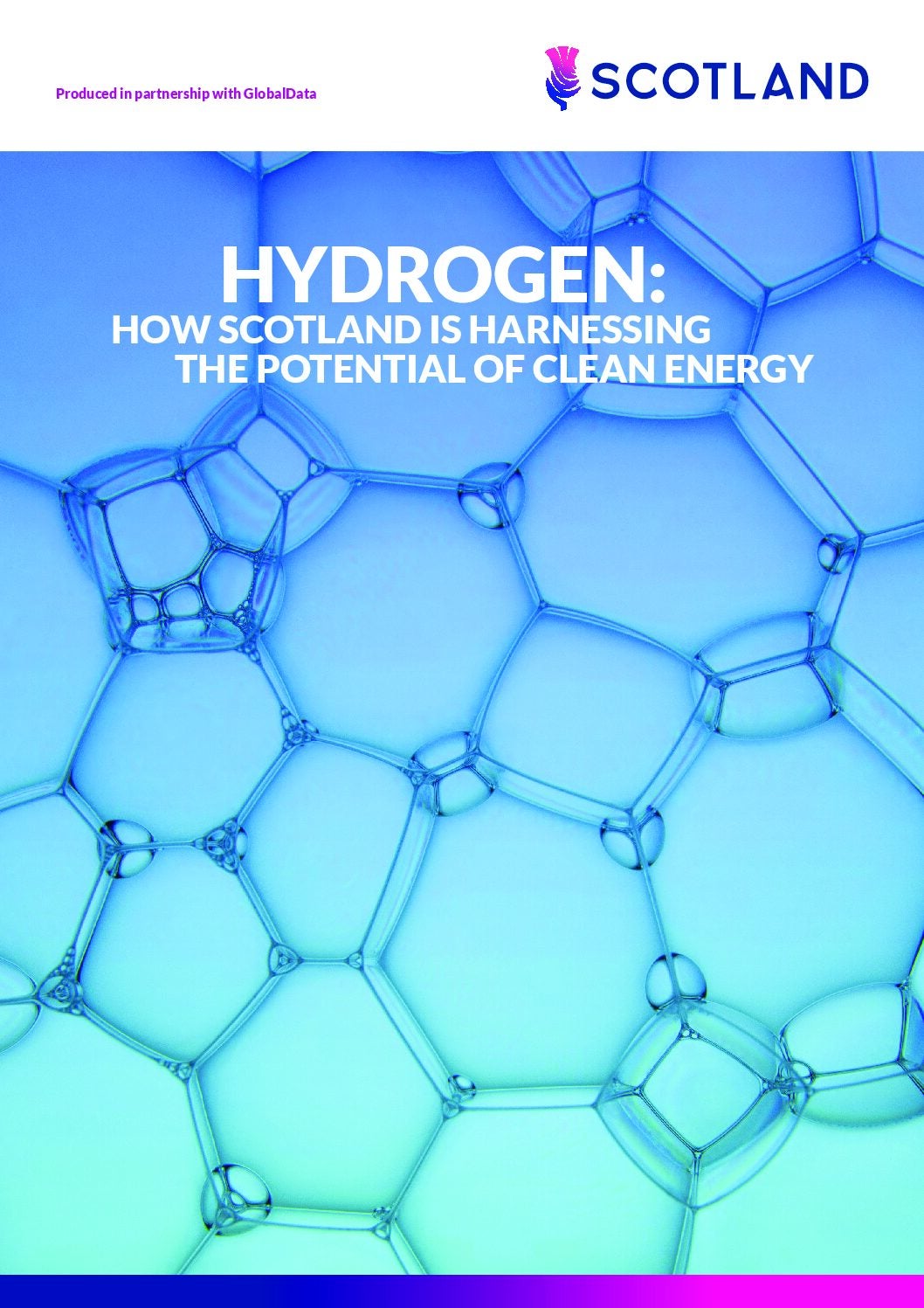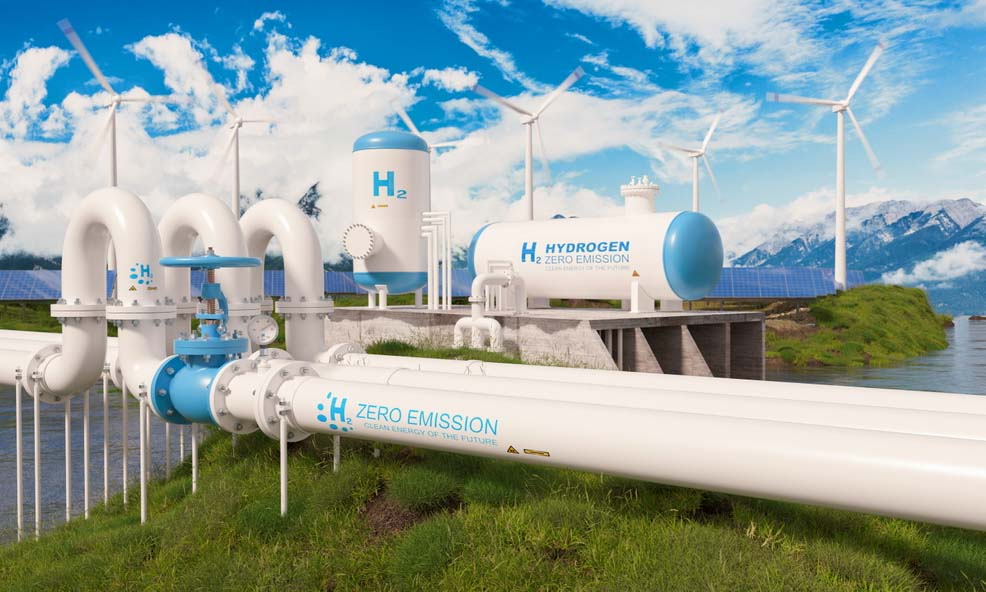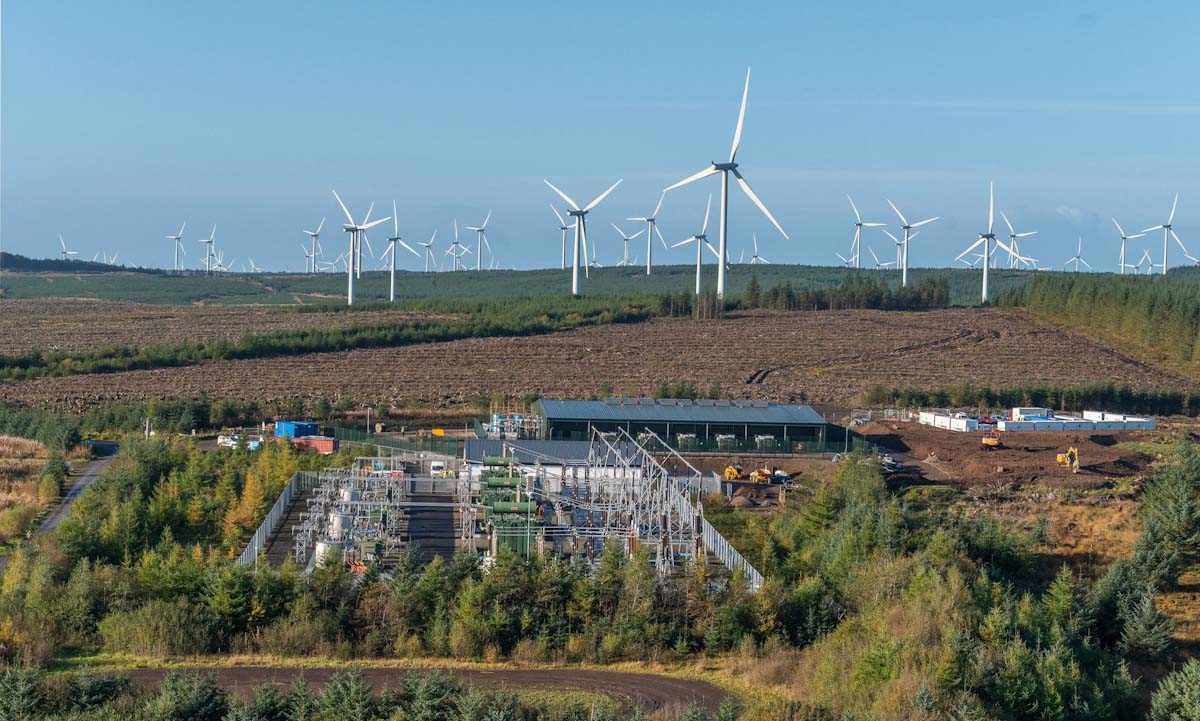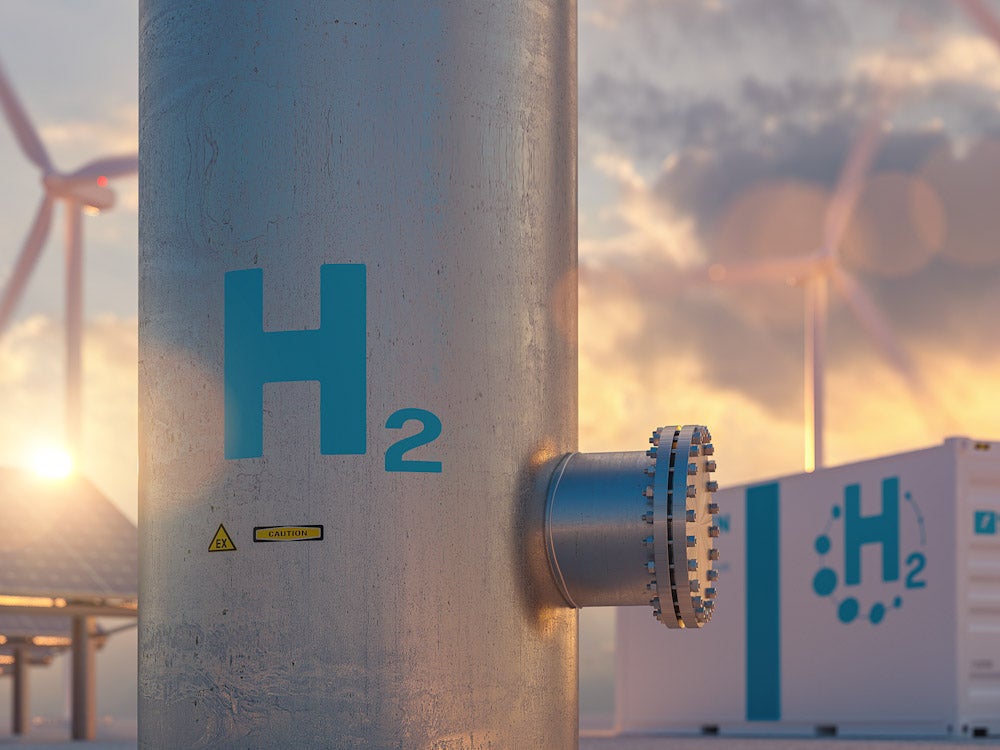
Hydrogen is rapidly gaining momentum as a replacement fuel to decarbonise heavy-emitting industries. The global green hydrogen economy is predicted to be worth more than $1trn by 2050, according to various estimates.
With many countries still emerging from a global energy crisis, hydrogen offers a means for nations to gain energy independence through domestic production. The natural gas also opens opportunities for exports and allows importing countries to diversify their range of energy supplies. However, for hydrogen to become a key part of decarbonisation as many are predicting, production has to scale up dramatically and be significantly cleaner than current levels.
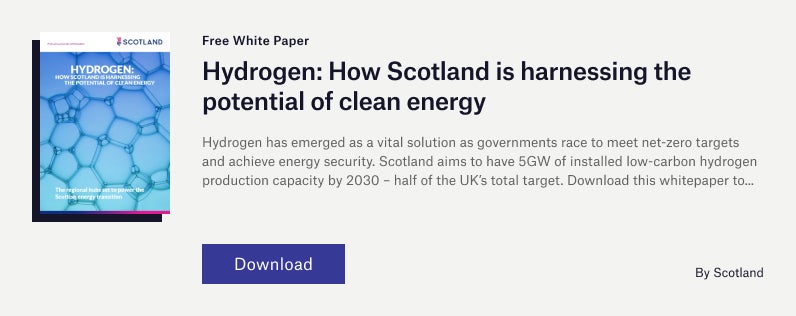
At present, approximately 90 million tonnes of hydrogen is produced through steam methane reforming of natural gas (grey hydrogen) or from coal (brown hydrogen). While the chemical element itself produces no emissions when burned, the production of grey or brown hydrogen is estimated to emit more than 800 million tonnes of carbon dioxide (CO2) a year.
Cleaning up hydrogen production either requires electrolysers powered by renewables to make zero-emission hydrogen, or adding carbon capture and storage (CCS) technologies to existing processes to create low-carbon (blue) hydrogen. While the technologies required for both processes are proven at small scales, they need upsizing at a rate and scale rarely seen before.
With its ambitious targets for hydrogen, Scotland is making significant strides with both technologies and techniques at the scale required. By 2045, the country plans to achieve 25GW of installed capacity from low-carbon or zero-emission hydrogen production. This could span a diverse range of industries – with considerable demand currently predicted, for example, in the maritime and aviation sectors.
To support development, the Scottish Government has awarded £7m to 31 different projects for the development and demonstration of low-carbon hydrogen technologies through its Hydrogen Innovation Scheme.
Another initiative that could help accelerate low-carbon hydrogen innovation in the country is Scotland’s Hydrogen Innovation Network (SHINe). Launched in May 2024 by Scottish Enterprise – Scotland’s national economic development agency – SHINe is a network of Scotland’s hydrogen innovation assets set up to drive sector innovations by increasing collaboration and supporting companies from across the world to come to Scotland to use those assets.
Surging demand for electrolysers
GlobalData’s The Global Race for Competitive Green Hydrogen report found that in 2023, the cost of producing hydrogen from natural gas (grey hydrogen) ranged from $0.5 to $1.7 per kilogram. The same quantity of low-carbon hydrogen cost $1 to $2, while zero-emission hydrogen was between $3 and $8 per kilogram. One of the key reasons for this is the high cost of electrolysers, the essential technology for creating zero-emission hydrogen by dividing water into its two chemical elements – oxygen and hydrogen. Currently, the electrolyser industry is relatively small and does not exist on the scale required to deliver the millions of tonnes of hydrogen expected to be produced every year in future. However, electrolyser capacities are expanding in Scotland.
“If you look at the electrolyser industry, it’s effectively a cottage industry right now,” explains Jamie Robinson, hydrogen specialist for Scottish Enterprise’s energy transition team. “These units are generally built in low volumes. They are put together by hand, but once we get gigafactories and automation involved in that process, the price of electrolysers is going to come down.”
According to GlobalData Insight, global zero-emission hydrogen production capacity is projected to increase at a compound annual growth rate (CAGR) of 62.8% between 2025 and 2030 due to the number of projects in development, with suggestions this increase could lead to electrolyser prices falling.
However, perhaps the biggest challenge for zero-emission hydrogen is the cost of renewable electricity. To produce zero-emission hydrogen at lower costs, Scotland has a big advantage in the sheer scale of its potential renewables sector. Already generating the equivalent of nearly 100% of its own electricity demand from renewables, Scotland’s renewables pipeline (predominantly onshore and offshore wind) is set to nearly quadruple the amount of installed capacity in coming years. And this volume will help to drive down the cost of electricity as well. Energy concepts that may have been deemed too ambitious even a few years ago are now moving closer to becoming a reality. Less than 20 miles from Glasgow city, Whitelee Windfarm has been granted funding to build one of Scotland’s largest electrolysers. The 7MW proton exchange membrane electrolyser will be powered by the UK’s largest onshore wind farm, which generates up to 539MW from 215 turbines.
Notable zero-emission hydrogen developments in Scotland
In May, RWE completed a series of feasibility and pre-front-end engineering design (FEED) studies for a 200MW zero-emission hydrogen project based at Grangemouth in the Central Belt of Scotland. Having secured a grid connection, the company is in the process of selecting an electrolyser provider. INEOS Grangemouth will receive the initial hydrogen produced on-site to aid the decarbonisation drive of one of the world’s biggest chemicals companies and Scotland’s largest emitter. Once the 200MW facility is operational, it will be capable of producing 3.6 tonnes of hydrogen an hour. In the longer term, there are reports that this capacity could even rise to 600MW. Alongside this projection, INEOS is also developing low-carbon hydrogen production capabilities, with carbon to be stored under the North Sea via the proposed Acorn CCUS facility.
As Scotland has a substantial amount of Europe’s offshore wind resources, the nation has a significant edge in the energy required to develop zero-emission hydrogen production. Several Scottish projects are the first steps towards the much larger goal of unlocking this immense potential.
The intention is that small demonstrator projects will enable future hydrogen production at a gigawatt scale from the vast offshore wind farms in development. Provided all the projects in the ScotWind and INTOG leasing rounds proceed as planned, they could add a combined total approaching 30GW to Scotland’s energy generation capacity.
In addition, a project in Orkney is aimed at harnessing another renewable energy source that Scotland has in abundance that is largely untapped. The European Marine Energy Centre’s Hydrogen Production Site uses tidal energy to power an electrolyser provided by Elogen. The coastal waters around Scotland are estimated to have amongst the best tidal energy potential in Europe, with turbines also used to power electric vehicle charging stations in Shetland. These tidal resources could make a large contribution to zero-emission hydrogen production.
With the huge potential for zero-emission hydrogen production projects in Scotland, the country is viewed by many in the energy industry as a prime location for electrolyser manufacturers to set up facilities to meet the expected rapid increase in demand for these vital units.
Building hydrogen capacity with carbon capture and storage
Although the long-term goal in Scotland is to focus on zero-emission hydrogen, the importance of low-carbon hydrogen cannot be overlooked in terms of scaling up production capacity and building reliable supply volumes to meet demand at a commercial scale, as well as establishing the infrastructure.
Despite the production of low-carbon hydrogen requiring methane (in most cases, natural gas), the crucial addition of CCS significantly lessens the environmental impact.
“Low-carbon hydrogen will be the ‘market-maker’ for any future hydrogen-based economy,” explains Mark Hughes, operations manager at NECCUS. “The deployment of CCS technology and the attendant low-carbon hydrogen production is likely to precede the ‘at scale’ production of zero-emission hydrogen.”
NECCUS is a partnership between government, industry and energy experts aimed at driving down carbon emissions from Scotland’s industries. A key project is Scotland’s Net Zero Roadmap, where NECCUS is working with over 50 member organisations to develop plans for them to decarbonise over the next two decades to reach net zero with the rest of the country by 2045.
Beyond hydrogen, CCS has wider importance in Scotland’s decarbonisation plans. NECCUS revealed that its ambition is to store up to seven million tonnes of captured carbon CO2 by 2030, making a significant contribution to both Scottish and UK net-zero targets.
Carbon capture, utilisation, and storage (CCUS) also has economic benefits, creating tens of thousands of jobs in areas such as north-east Scotland and allowing existing industrial sectors to continue manufacturing to safeguard employment in these vital industries in the transition to a low-carbon economy.
First-mover opportunities in Scotland’s energy transition
There is a push in Scotland to obtain the status as one of the UK’s core CCUS clusters by 2030. A UK Government market update in December 2023 stated that Scotland’s ACORN project remains one of the best placed to deliver its track-2 ambitions, with track-1 clusters having already been designated.
With Scotland’s heritage of offshore and onshore engineering, it is well-placed to achieve cluster status and maximise investment opportunities. Furthermore, much of Scotland’s infrastructure and experience from the North Sea oil and gas industry is transferable for both hydrogen and CCUS, and there are multiple companies in Scotland taking steps to innovate for these new energy sectors.
“We are keen to take advantage of the first-mover opportunities available so we can unlock that investment and other countries don’t beat us to the prize,” adds Hughes. “The more investment you get, the more costs will come down, and the technology improves. That is what we are expecting to happen with carbon capture.”
Scotland has extensive resources for potential storage of captured carbon, utilising many of the oil and gas fields in the North Sea. With many other countries seeking locations to store nationally captured carbon underground, Scotland could be a leading destination for storage.
“We have vast reserves that are geologically sound, and that should be an attractive proposition to send your carbon to Scotland to be permanently stored under the North Sea,” adds Hughes.
“We can see ourselves becoming global experts in CCS,” comments Hughes. “If we get the technology and projects up and running, we gain that experience and we can take our expertise throughout the world as with the way the North Sea oil industry developed.
“Because of the environment, if you can achieve it in the North Sea, you can achieve it anywhere,” he adds.
To learn how Scotland is building its hydrogen industry through hubs, download the document below.

